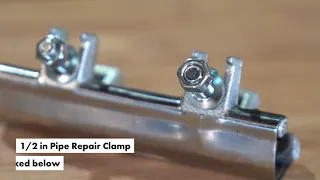Plumbers and DIY enthusiasts alike often need to inspect sewer lines for blockages, breaks, or hidden problems. A sewer camera becomes an invaluable tool, letting you view the inside of drain lines and document what you find. Whether you suspect a blockage under a slab or want to confirm that your sewer lines are free of cracks, understanding how to use a camera can save you time and prevent bigger problems.
Below, we’ll walk through the process step by step: from preparing the camera, to guiding it through the line, to documenting your findings with best practices. This will help ensure you not only spot potential issues, but also record them for clients, insurance, or your own future reference.
Preparing for the Inspection
Check the Cleanout Location
Before you start, identify where you’ll insert the camera. In many residential setups, you’ll have a two-way cleanout—one side pointing toward the house, and one side pointing out toward the main sewer or septic. Take time to see which direction leads into the property versus away to the street or septic tank.
Power the Camera and Recording System
Modern sewer cameras, like the Milwaukee setup in the example, often have built-in recording screens or the option to connect to a handheld monitor. Test your battery level and ensure you have a flash drive inserted if you plan to record the session.
Wear Proper Gear
You don’t have to suit up in major hazmat attire, but gloves, safety glasses, and a towel are very handy for cleaning the camera reel as you pull it back out. In older or questionable sewer lines, you may run into contaminants or even insects.
Sponsor Note
This post is sponsored by Leak-Pro, a leader in training for water leak detection and sewer isolation. Their equipment and courses can help plumbers locate and repair leaks more effectively. If you want in-depth knowledge, visit leak-pro.com.
Inserting and Navigating the Camera
Start With a Short Distance
Begin by guiding the cable a few feet to check camera orientation. Some two-way cleanouts can be tricky, making it easy to go in the wrong direction if you’re not careful. A gentle push-and-pull helps you see whether you’re heading up toward the house or out toward the main line.
Monitor the Screen Continuously
As you feed the cable, watch the camera feed. If you see water levels rise, you’re likely hitting a belly in the line or submerging the lens. Move slowly to avoid pushing debris deeper. If you spot a turn (like a 90-degree elbow), angle the cable gently and let the camera pivot around the bend without forcing it.
Check for Standing Water and Debris
Seeing standing water suggests improper slope or a partial blockage. Bits of mud, dirt, or leftover sludge can indicate breakage or heavy buildup. Even if you don’t see an active leak, standing water often points to possible future clogs.
Look for Roots or Offsets
Roots typically enter through small cracks or joints in older lines. PVC can still crack and shift, leaving gaps for roots to invade. If you notice any infiltration—like wispy strands or large masses of root growth—mark it for future repair. Also keep an eye out for offsets, where one pipe doesn’t align perfectly with the next section, creating a lip where debris can snag.
Documenting Your Findings
Record From Start to Finish
Set your recording device the moment you insert the camera. Many sewer cameras have a simple “Record” button or an on-screen prompt. It’s wise to introduce yourself, mention the address or the property context, and note the date. You might show the house in the background so there’s no confusion about which property you’re inspecting.
Speak Through Any Observations
If you see a separation, partial block, or swirling debris, narrate that event. For example: “We’re at 32 feet from the cleanout. There’s a slight offset here with a bit of standing water.” This helps anyone reviewing the footage understand the significance of what they’re seeing.
Pull Back Slowly
On the return pass, keep recording. Sometimes you’ll catch a detail you missed on the way in because the camera angle or lighting is slightly different. Use a towel to wipe the cable, preventing sewage or dirt from dripping everywhere.
Why Self-Video Matters
Unfortunately, some unethical plumbers record old, problematic lines from a different property and claim it’s yours. By including a shot of yourself and the house, you ensure authenticity. This demonstration of ethical practice builds trust with clients—and if you’re a homeowner or buyer, you can confirm you’re seeing the correct property’s sewer line.
Interpreting the Results
No Major Issues Found
If you see minimal debris, no cracks, and clear flow, that’s good news. You might note small bellies or slight misalignments, but no pressing concerns.
Evidence of Roots or Breaks
If your camera reveals root intrusion or a clear break, you can use a locator function (many cameras have a built-in transmitter) to pinpoint where the damage is from the surface. Mark that spot on the ground or note the distance on your recording for future excavation.
Unknown Lateral Lines
Sometimes you’ll encounter branches leading off in odd directions—maybe an old abandoned line or an extension to an outbuilding. Keep a record so you won’t be startled by uncharted lines in the future.
Best Practices for a Sewer Camera Job
1. Ensure Good Lighting on Screen
Dim or fuzzy images can hide cracks. Many cameras have adjustable LED brightness. Tweak it so you aren’t blinded by reflection nor left in the dark.
2. Use a Properly Sized Head
Camera reels often come with interchangeable heads. A too-large head can get stuck, while a too-small head might spin or tilt. Select the right diameter based on the pipe size.
3. Mark Depth
If your reel’s footage counter says you’re at 45 feet when you see a crack, you can either trust that or confirm with a built-in sonde and external locator. Accurate depth measurement is crucial if you must dig.
4. Beware of Intermittent Flow
Remember that if anyone flushes a toilet or runs a sink while you’re scoping, a surge of water can obstruct the camera view or push the cable.
5. Final Clean-Up
Dispose of any sewage-laden water and rinse off the reel after finishing. Sanitation is essential to avoid spreading contaminants between job sites.
Common Mistakes
- Forgetting to Press Record
Don’t discover after you finish that your entire run wasn’t saved. Confirm the blinking or on-screen indicators show active recording. - Pushing Past Serious Obstructions
If something is jammed, forcing the camera can break or dislodge it. Consider clearing or snaking the line first, then re-running the camera. - Failing to Communicate with Homeowners
If you’re a pro, explain to clients what they’re seeing. Show them major or minor issues. Lack of explanation can lead to confusion or mistrust. - Skipping Gloves and Eye Protection
Sewer lines harbor bacteria, gases, and sometimes sharp edges. Basic protective gear is an easy step to safeguard your health.
Wrapping Up and Next Steps
A sewer camera inspection, done right, answers big questions about your drain system. You’ll learn whether a minor clog is all you face—or if significant repairs are needed due to broken lines or root infiltration. By documenting everything with a clear, narrated video, you ensure future tradespeople, inspectors, or clients know exactly where problems lie.
If you do spot a severe defect, it’s time to plan the repair. Depending on the severity, you might need spot repairs or a full line replacement. Locating the precise position of the issue with a transmitter and receiver saves countless hours of guesswork and unnecessary digging.
Finally, remember that regular camera inspections can be part of preventive maintenance. If you recently purchased a property, or if your older house experiences recurrent clogs, an annual or biannual camera check can preempt bigger emergencies.




